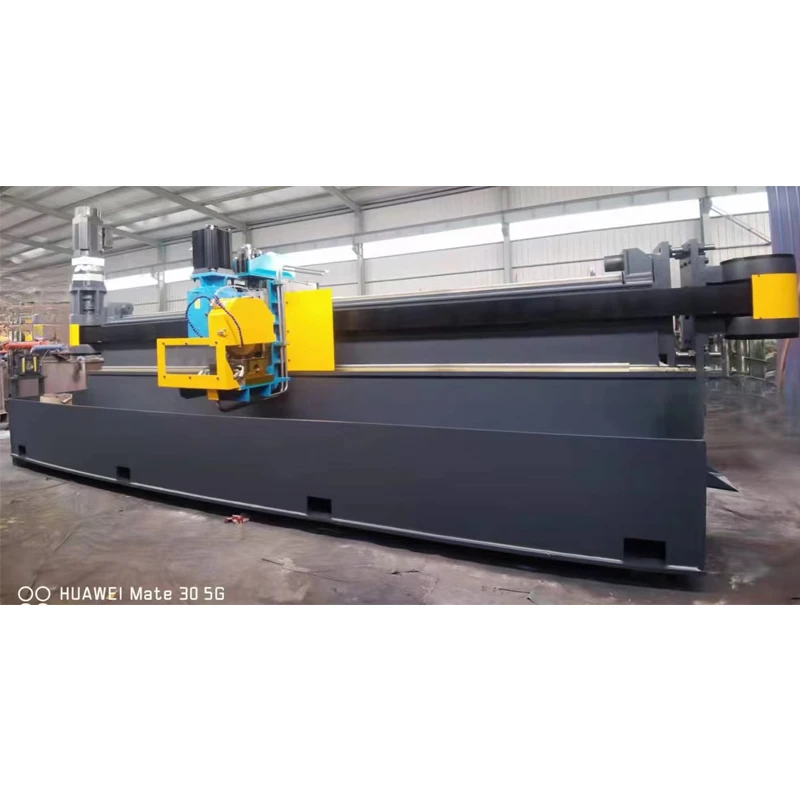sheet metal roll forming machines
Understanding Sheet Metal Roll Forming Machines
Sheet metal roll forming machines are critical tools in various manufacturing industries, facilitating the efficient production of metal profiles and components. The process of roll forming involves feeding a flat strip of sheet metal through a series of rollers that progressively shape it into a desired cross-section. This article will explore the mechanics, applications, and advantages of sheet metal roll forming machines.
How Does Sheet Metal Roll Forming Work?
The roll forming process begins with a coil of sheet metal, which is typically made of materials such as steel, aluminum, or copper. The metal strip is uncoiled and fed into a series of rollers, each designed to bend the metal incrementally. As the strip passes through these rollers, it undergoes plastic deformation, gaining strength and rigidity due to the cold working process.
The design of the rollers is crucial; each set is engineered to produce a specific profile. By adjusting the spacing and shape of the rollers, manufacturers can create a wide range of profiles, from simple angles to complex shapes used in various applications. This versatility makes roll forming an attractive option for producing high volumes of uniform components.
Applications of Roll Forming Machines
Sheet metal roll forming machines are widely used across multiple industries. One of the most common applications is in the construction sector, where they produce metal roofing, siding, and structural components. The durability and resistance of roll-formed materials make them ideal for buildings, bridges, and other infrastructure projects.
In the automotive industry, roll forming is employed to manufacture parts such as chassis and structural components, where strength and weight savings are crucial. The precise and consistent nature of roll forming allows manufacturers to maintain stringent tolerances, essential for safety and performance in vehicles.
sheet metal roll forming machines

Additionally, the appliances and HVAC industries utilize roll forming to create streamlined components that are both functional and aesthetically pleasing. From air ducts to brackets and frames, roll-formed parts contribute to the efficiency and effectiveness of various everyday appliances.
Advantages of Roll Forming
Roll forming machines offer several benefits over traditional manufacturing processes. Firstly, they can produce long lengths of consistent profiles with minimal waste. This efficiency not only reduces raw material costs but also lessens the environmental impact of manufacturing.
Secondly, the speed of production is a significant advantage. Once the tooling is set up, roll forming machines can operate continuously, producing parts at a high rate. This capability is especially beneficial in high-demand applications where time-to-market is critical.
Moreover, the inherent strength of roll-formed products is a significant selling point. The cold working process during roll forming enhances the material's strength, resulting in products that can endure higher loads and stresses compared to those created by traditional methods such as stamping or machining.
Conclusion
In conclusion, sheet metal roll forming machines represent a sophisticated and efficient solution for manufacturing various metal components across several industries. Their ability to produce high volumes of custom shapes with precision and minimal waste positions them as a preferred choice in modern manufacturing. As technology advances, we can expect to see further improvements in the capabilities of roll forming machines, making them an even more integral part of the manufacturing landscape. Whether in the construction, automotive, or appliance sectors, the impact of roll forming will undoubtedly continue to grow, shaping the future of metal fabrication.
-
High Frequency Straight Seam Welded Pipe Production Line-BzZhou Xinghua Machinery Equipment Manufacturing Co., LTD.|line pipe steel&welded gas pipeNewsJul.30,2025
-
High Frequency Straight Seam Welded Pipe Production Line-BzZhou Xinghua Machinery Equipment Manufacturing Co., LTD.|High Precision&Automated SolutionsNewsJul.30,2025
-
High Frequency Straight Seam Welded Pipe Production Line - BzZhou Xinghua Machinery Equipment Manufacturing Co., Ltd.NewsJul.30,2025
-
High Frequency Straight Seam Welded Pipe Production Line-BzZhou Xinghua Machinery Equipment Manufacturing Co., LTD.|Precision Welding, High EfficiencyNewsJul.30,2025
-
High Frequency Straight Seam Welded Pipe Production Line|BzZhou Xinghua|Precision Welding&EfficiencyNewsJul.30,2025
-
High Frequency Straight Seam Welded Pipe Production Line - BzZhou Xinghua|Precision Engineering&EfficiencyNewsJul.30,2025


